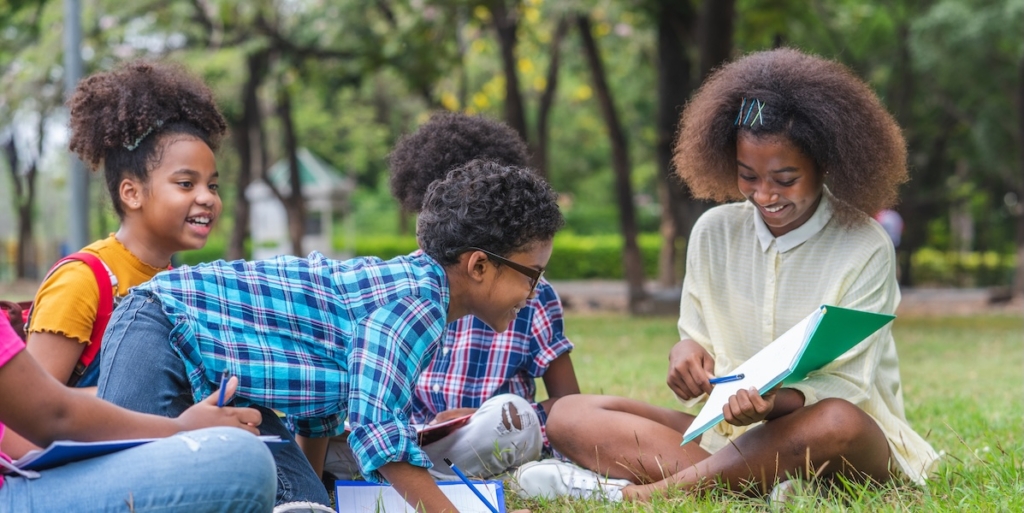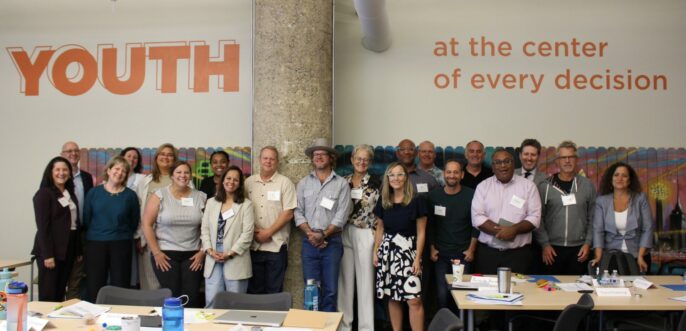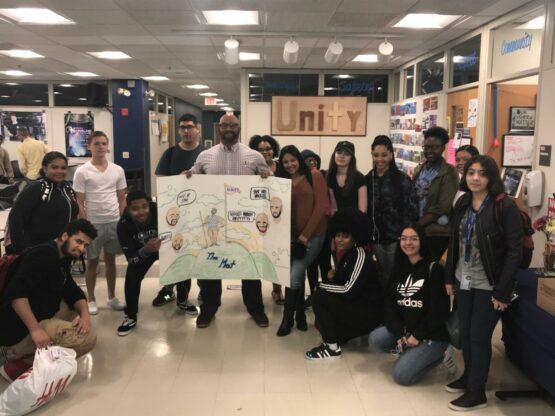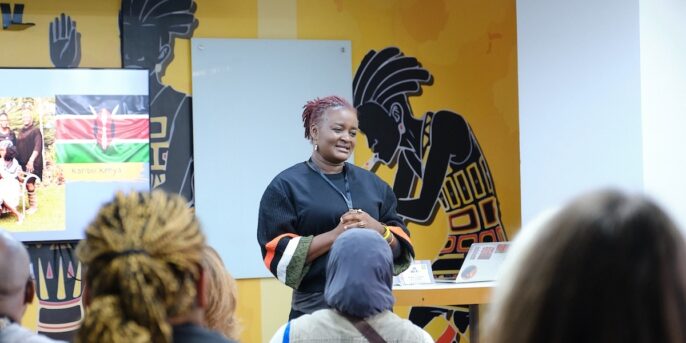As I sit in the Ella Fitzgerald Lounge of the Historic Paramount Theater in Brooklyn, New York, I notice a feeling course through my mind and body. I feel a wave of energy that is a combination of excitement, anxiousness, gratitude, and anticipation. This feeling seems even more intense for me at this moment as I wait to hear powerful stories shared by a group of brave, bold, and visionary learner-centered leaders from across the country.
These leaders have joined together in this historic and inspired landmark to ignite the Learner-Centered Ecosystem Lab. This marks the beginning of a year of transformative work to advance the promise of learner-centered education with new directions, new partners, new textures, and new ideas.
I’ve felt this same wave of energy countless times in my life. Whether it is a small thing like walking into a social gathering, a regular occurrence like the first day of school, or something like this moment, beginning an initiative connected to commitments and people I care deeply about; this feeling has always accompanied me during times of new beginnings. As I wait for our first storyteller, I try to identify the origin of these similar yet different feelings, and I jot down four words into my notebook—“New starts, new stories!”
Storytelling is one of the many things that unite us as human beings. Our brains are wired to make sense of the world around us more powerfully when presented in narrative forms. From cave paintings to literature to films, stories have served as a way for us to share who we are, what we value, and how we perceive the world. Narratives have always shaped communities, societies, and cultures, conveying our individual and collective journeys—past, present, and future. At its core, storytelling binds us together. They create a shared sense of identity, offering a mirror in which communities see both their strengths and their vulnerabilities. Stories have a unique capacity to make abstract values feel tangible and collective aspirations seem achievable.
This is why leaders, activists, and social innovators often rely on storytelling when seeking to inspire collective action. A compelling narrative can break through the noise, appeal to emotions, and articulate a vision that captures the imagination. It frames challenges not just as obstacles but as opportunities for transformation, highlighting the role every member of a community can play. Within the act of storytelling, one can start to imagine how the “fresh start effect” emerges as a particularly powerful concept to attend to when engaging in action centered in relationship and community. This psychological principle, describing how specific temporal landmarks or shifts in context can motivate individuals and groups to take action, is powerful when initiating collective efforts, as it provides a compelling frame to start anew, co-create purpose, and foster belonging.
As we sat as a group together, we listened intently to each of our friends and partners sharing their stories. They drew us in with their ways in and discoveries of purpose. They shared moments of epiphany with learners, families, and community members. They painted pictures across the tapestries—from urban spaces, to warm California vistas, and beyond. Every story was unique. Each one was captivating.
From cave paintings to literature to films, stories have served as a way for us to share who we are, what we value, and how we perceive the world.
Alin Bennett
Imagine a collective initiative aimed at revitalizing a neglected green space in the heart of a community. The organizers could simply state the project’s objectives: cleaning up trash, planting trees, and installing new playground equipment. While these tasks are important, they are unlikely to evoke much excitement or long-term commitment on their own. However, if the organizers instead frame the project as a fresh beginning—a new chapter for the community and a chance to transform a space for future generations—the initiative takes on new life.
The work of Runway Green, in another historic New York landmark of Floyd Bennett Field, emblemizes this new chapter at a site—once an airfield, a naval base, and originally the home of the Canarsee, a group of Lenape Native Americans—that now hold immense promise as an emerging learner-centered ecosystem. Our group immersed in this vision together, and its story drew us deeply in.
A well-crafted story might recount how the park was once a gathering place full of laughter and joy, and how this revitalization effort is an opportunity to rekindle that spirit. By emphasizing a collective fresh start, the narrative inspires action and infuses the collective endeavor with deeper meaning and individuals with deeper motivation.
Yet, storytelling does more than motivate, it can transform perspectives. In the context of a new start, it not only enrolls people to engage but also helps redefine their identities as contributors to something greater than themselves. If we continue crafting the story of the green space revitalization, the narrative may begin by acknowledging the mistakes of the past, but then shifts to invite current generations to be the heroes of a new chapter—one marked by sustainability and commitment to our community. The fresh start effect, embedded within this larger story, compels people to take action with the understanding that they have a rare and urgent opportunity to make a difference.
This very short story begins to reveal important considerations when thinking about storytelling in the context of a new start. It creates a clear temporal landmark, anchoring the story in a clear point of change, creating space for people to embrace the notion of starting anew. It recontextualizes how we see “the past.” It doesn’t ignore past difficulties or failures. Instead, it acknowledges these challenges and frames them as part of the pathway to the present opportunity. At the same time, it sets a vision for the future. It paints a picture of a future that awaits if the collective initiative is successful. The vision is aspirational, yet attainable, giving people a clear sense of purpose and the motivation to act. Lastly, it is an inclusive call to action. The story invites everyone to play a role in shaping the future. People can see themselves as integral parts of the narrative, with unique contributions that will help turn the vision into reality.
A new start, when set in the context of relationships and narrative, has the potential to inspire profound change in collective initiatives. By crafting stories that frame new beginnings as opportunities for growth, collaboration, and transformation, leaders can foster the values that matter most and drive action. However, these stories must be authentic, inclusive, and grounded in a shared vision for the future. When done well, storytelling becomes more than a tool for communication—it becomes a catalyst for a joyful, more hopeful chapter in a collective experience.




